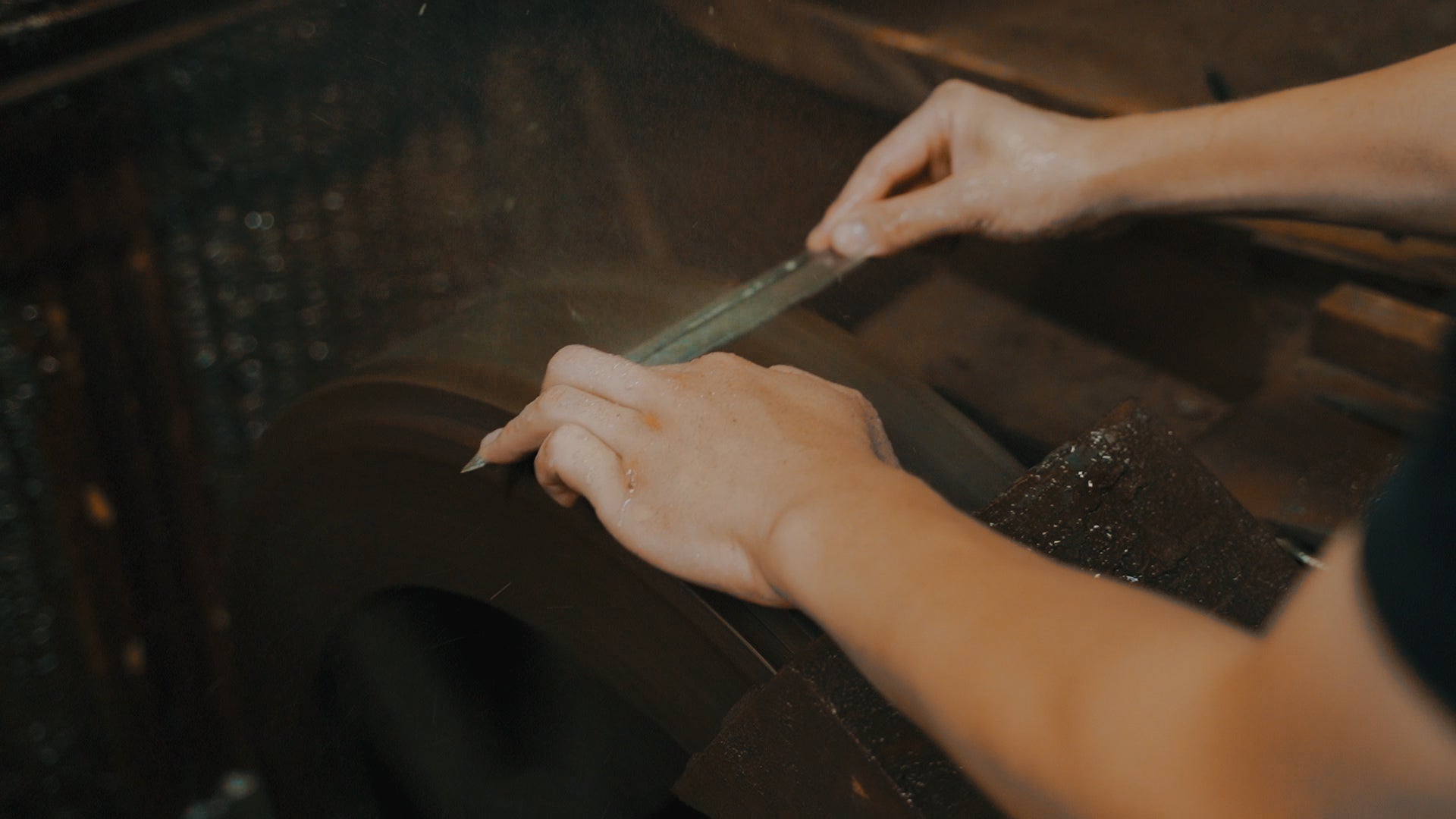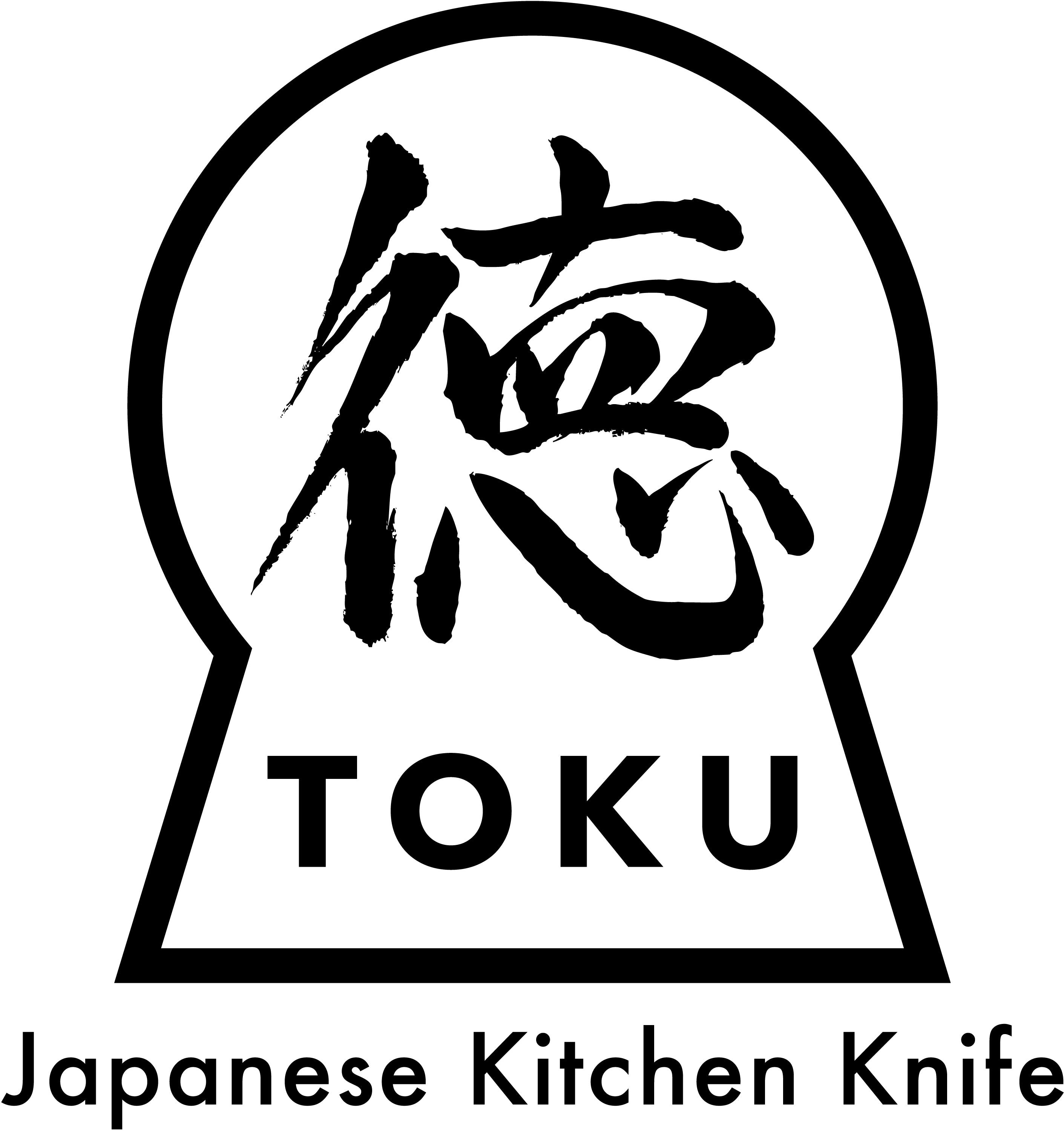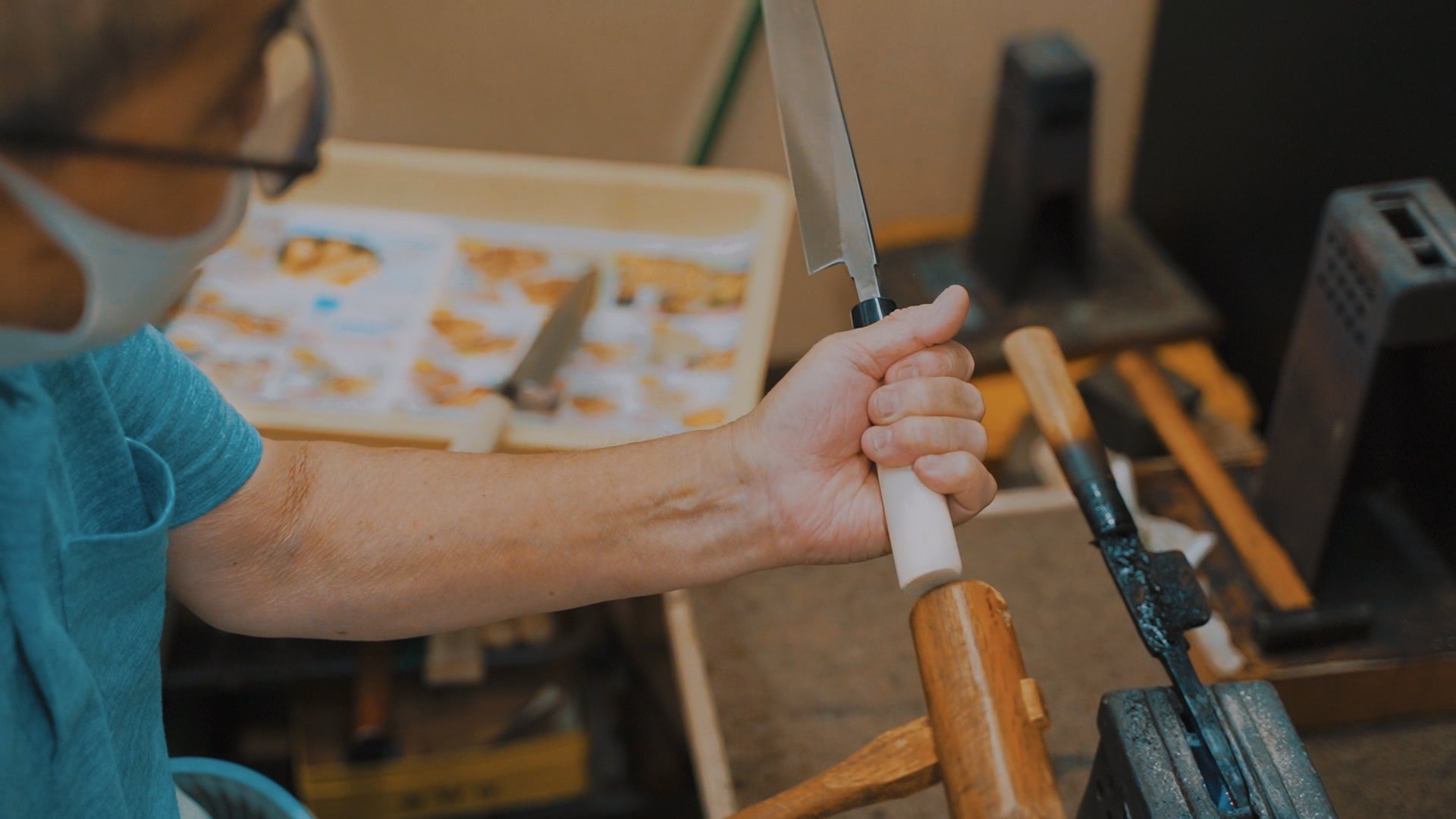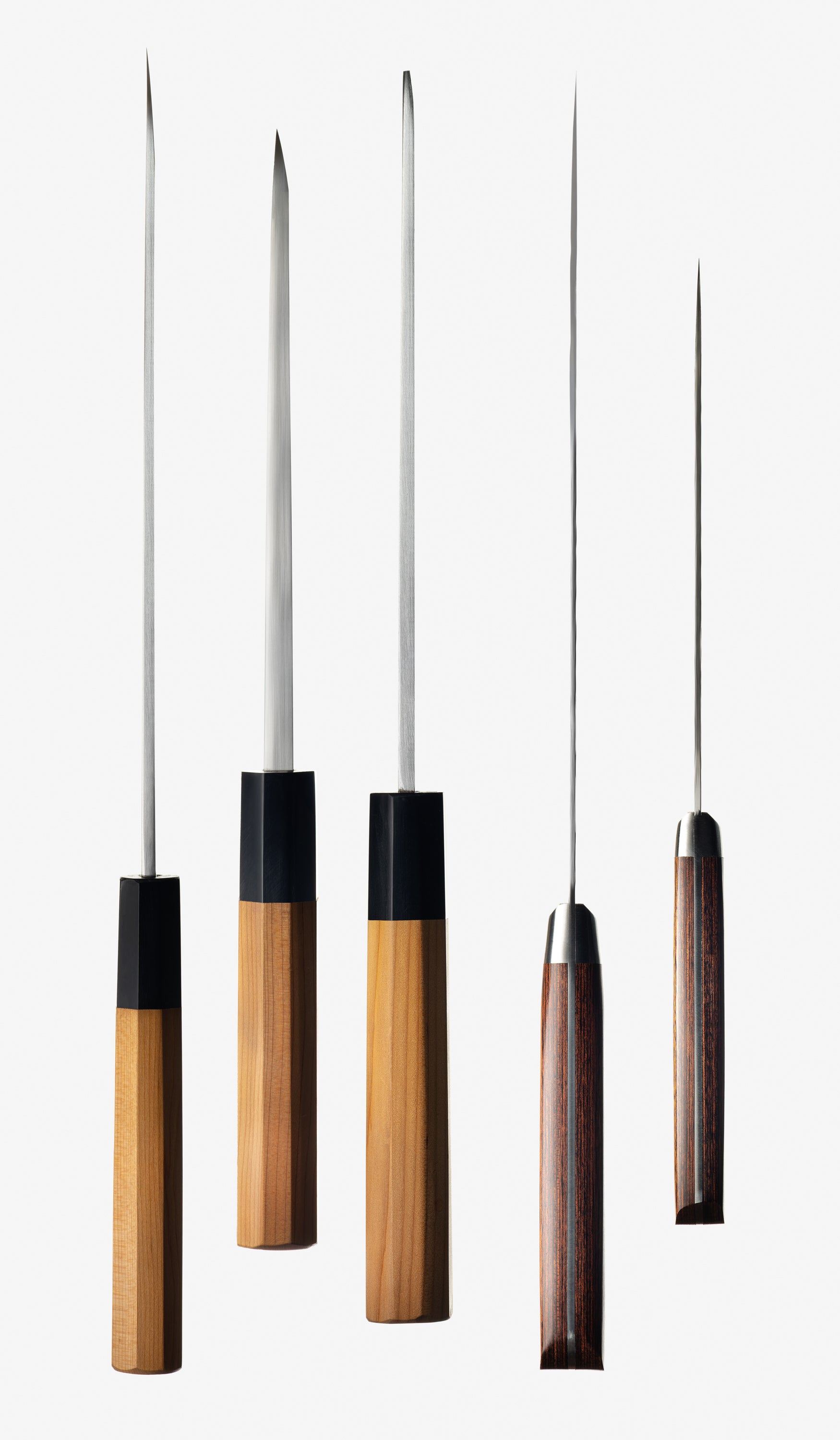
[2024] Knife manufacturing steel edition part 2
I am Okudaira, the owner of "Japanese Kitchen Knife TOKU''.
We want to sell knives made in our hometown of Sakai, Osaka, so we purchase and sell knives made in Sakai from a knife manufacturer in Sakai.
We don't just sell knives, we visit a number of blacksmiths and bladesmiths in Sakai to help our customers understand knives, experience the actual work, and hear from the craftsmen. I'm here. In addition to Sakai, we also visit Seki in Gifu, Tsubame-Sanjo in Niigata, Tanegashima in Kagoshima and Katsushika in Tokyo, in an effort to deepen our understanding of the characteristics and commitment of each.
Knife manufacturing steel edition part 2
Last time, we looked at the forging process for steel knives.
This time, I would like to take a look at the blade attachment process.
The knife produced through the forging process is black and has a thick blade.
The blade-setting process involves using a whetstone to sharpen the knife.
First, we use a large rotating whetstone, also known as a water whetstone or a circular whetstone, to do some rough sharpening.
At this time, the knife is fixed in a wooden frame and sharpened by pouring water over a large circular whetstone.
Next, apply a puff. As we sharpen it, it may become distorted due to heat, so in that case, we will need to remove the distortion while sharpening.
Once the rough sharpening is finished, the process is called main sharpening. In this process, the blade is further thinned by changing the whetstone. Once this process is complete, it looks like a knife.
After the main sharpening is finished, sharpen the back side. This is the work of adjusting the shape of the back plow created during the blacksmithing process.
Next, apply a wooden polisher. Wood whetstone is the process of using a wooden rotary whetstone (not a stone) to sharpen the rough surface of the whetstone.
After this, we will use the various whetstones that you often see to sharpen the blade.
First, we will sharpen using a medium whetstone. After the medium whetstone, a finishing whetstone is used to sharpen, and then a small blade is added.
After that, the blade work is completed by blurring and hazing.
The work of sharpening a blade is a process of honing from a coarse whetstone to a fine whetstone, and the work is done by changing the grit of the whetstone several times.
When I write it down as mentioned above, it may seem very simple and there are only a few steps, but in reality, each step takes time, and each tool needs to be handled carefully. there is. Also, as the knife gets hot as it is being sharpened, water is used to keep the knife from getting too hot. If the knife gets hot, it may warp or become distorted, so we need to be careful.
There is also a process called mirror finishing for blades.
Mirror finishing refers to finishing the flat part, peaks, and back of a knife to make it look like a mirror.
There is a way to make only one side, both the front and back sides, and the entire surface, including the peaks, into a mirror finish.
Mirror finishing requires a lot of time spent sharpening each knife with a whetstone or polishing it with an abrasive.
This will be a very time-consuming task.
A knife with a mirror finish looks very beautiful, and it would look cool to see it being used by the counter chef at a sushi restaurant.
So far, we have looked at the blade attachment process.
In addition to the forging process, a knife can only be made into a good knife if it has a good edge. Of course, the patterning process that follows is also important.
There is also a workshop where you can experience blade making and take a tour, so if you are interested, why not come and try it out or take a tour?
I personally went to try out knife sharpening and was taught how to sharpen a knife, so I thought it would be a good opportunity.
The beginning of everything Sakai https://sakai-openfactory.jp/
Let's go to a knife store!
When buying a knife, if you don't know for sure unless you actually see it, go to a knife store and try holding the knife. However, most stores do not allow you to try cutting the knife, so you cannot check the sharpness before purchasing.
If you don't have a store that sells knives near you, it's best to purchase from a knife specialty store's mail order site.
"Japanese Kitchen Knife TOKU" has a video showing the actual cutting process, so please use it as a reference.



Leave a comment
This site is protected by hCaptcha and the hCaptcha Privacy Policy and Terms of Service apply.